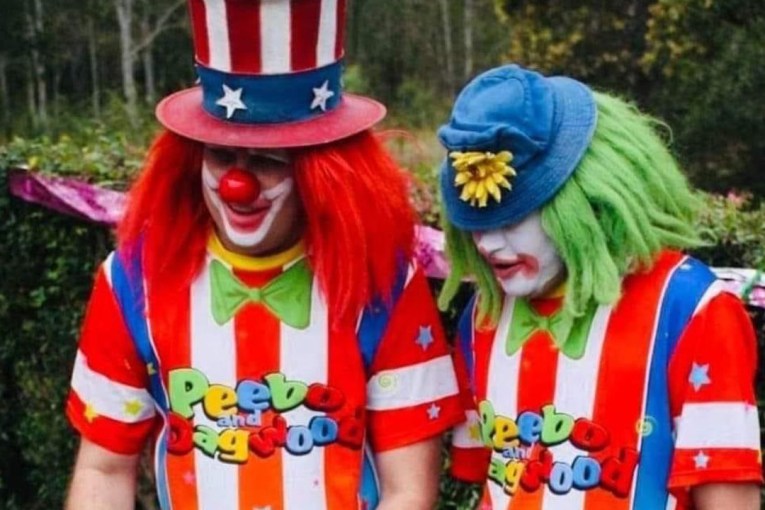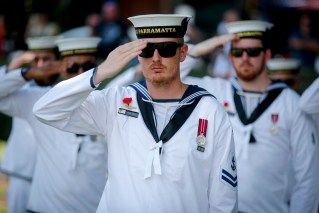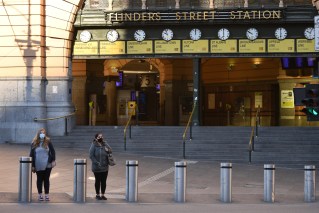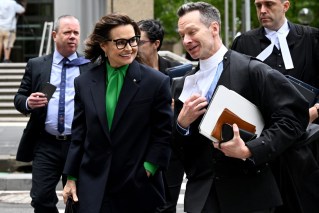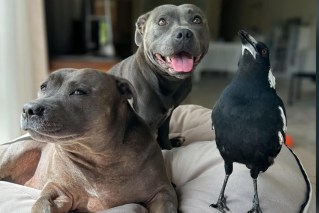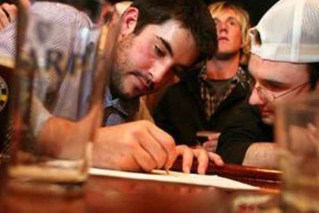Marching into a high-tech battle with flared pants and an overhead projector
Fancy taking Todd Greenberg’s place as boss of the NRL? You’d better be prepared for a culture shock, writes Michael Blucher

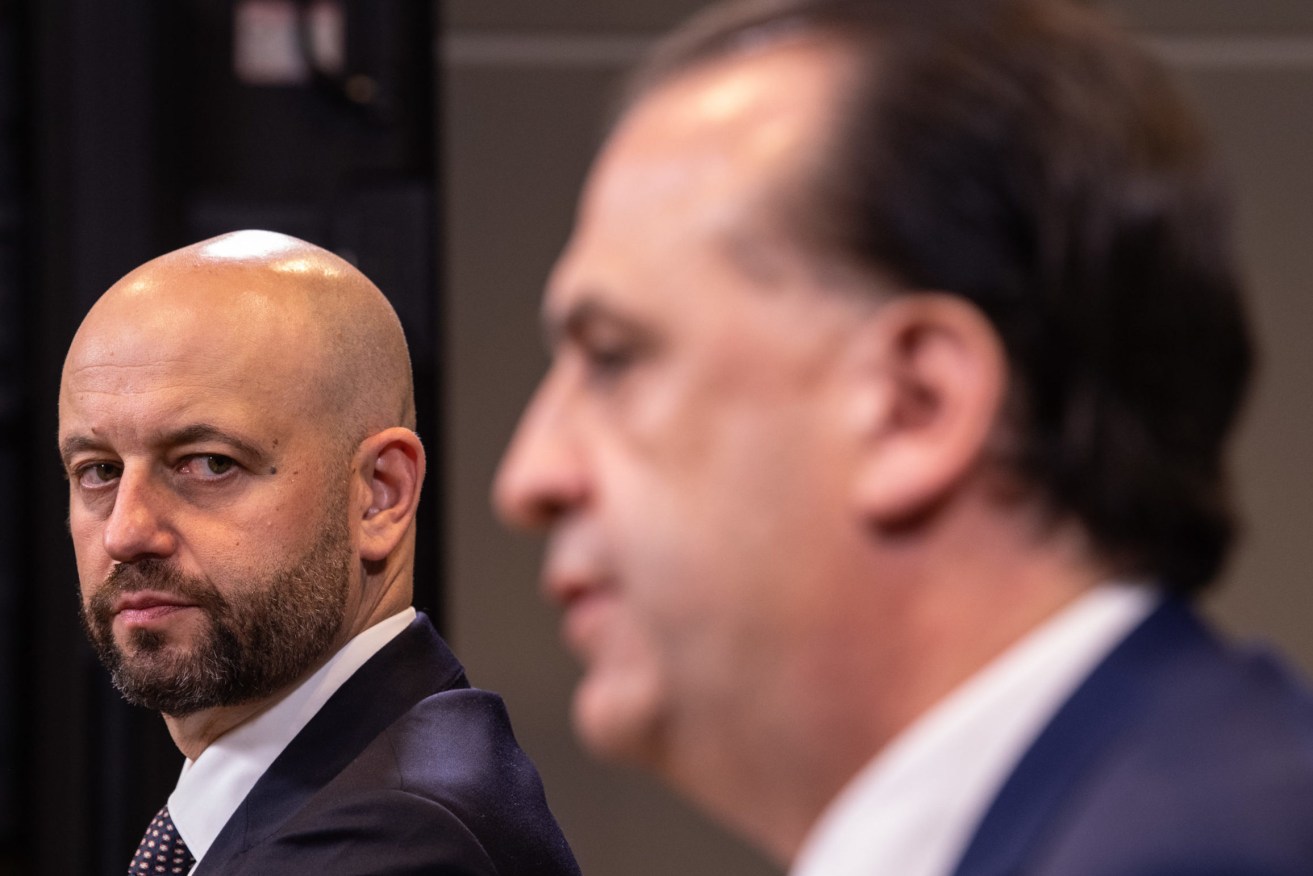
Outgoing National Rugby League Chief Executive Officer Todd Greenberg and Australian Rugby League Commission Chairman Peter V’landys . (AAP Image/James Gourley)
Not that many years ago, the now-outgoing NRL CEO Todd Greenberg was part of a delegation, paying a visit to “club land” where the group was to be presented with the five year business plan of one of their struggling “franchisees”.
There was nothing sinister about the outing – just part of the ongoing supervisory responsibilities of the parent body.
When they arrived at the club, the local executive contingent wasn’t as organised as they might have been.
“Take a seat in the boardroom, we’ll be with you in a jiffy,” one of the calmer club men suggested, buying some much needed time.
As the NRL execs entered the boardroom, they were greeted by the sight of shag pile brown carpet, complete with stains and cigarette burns. None of the chairs around the boardroom table matched – they looked like they’d been picked up at a weekend garage sale.
“Righto, almost set,” another of their hosts assured them, making a b-line for the bank of cupboards at the rear of the room. “Hey, anyone seen the cord for the thing-a-ma-jig? he asked, continuing to scour the darkest, dustiest recesses of the cabinetry.
No luck. They’d have to do the presentation without the “thing-a-ma-jig”.
The “thing-a-ma-jig”, for the sake of clarity, was an overhead projector, a piece of office equipment that disappeared from most Australian businesses about the same time as flared trousers. The only difference – there was some chance flares would be back.
The senior NRL execs were gobsmacked. Here were some of their trusted lieutenants, leaders of a multi million dollar sporting enterprise, late, disorganised, about to present their five year strategic plan on bits of clear plastic, with some scribblings from a blue marker pen
They didn’t dare contemplate the content of the strat plan, but pretty quickly they discovered it was in keeping with the rest of their experience.
In a round about way, the chaotic exchange helps explain some of the complexity that comes with administering the game, in particular the role of NRL chief executive.
There are aspects of Rugby League that are highly professional, even moderately sophisticated.
But on many other levels, the game is trapped in the 1970s and 80s, the thinking of key individuals hamstrung by the code’s working class roots, which are is still worn by many as a badge of honor.
Additionally, in club land, self interest invariably takes precedence over “whole of game”. If it’s good for blue and white, or yellow and black or red and green, then it’s good, regardless of how that very circumstance impacts the brand health of the NRL, or the longer term commercial viability of the code.
On account of that same unbridled passion, many find it hard to see the big picture – the arch enemy for instance is usually a rival club, rather than the rival code, competing for the same TV broadcast deals, the same sponsorship dollars, and in some markets, the same bums on different stadium seats. On occasions, even the same athletes.
The rabid NRL apologists would probably suggest it’s no different in the other codes, that the AFL for instance is afflicted by the same fierce internal rivalries and petty jealousies.
At some level that’s true. The difference is its CEO Gillon McLachlan is working with forward thinking grown ups, people roughly rowing in the same direction rather than trying to tip one another out of the boat.
That’s not to suggest there aren’t some highly functional pockets of professionalism dotted throughout the wider organisational structure. Unquestionably there is.
There’s just not enough of them.
Senior sports administration jobs are without doubt among the most challenging roles on offer in corporate life. Just ask Raelene Castle, Rugby Union’s punching bag for the past few years. There’s a shareholder meeting conducted not half yearly, but weekly, with four million Twitter and Facebook users all contributing to the agenda. Passionate stakeholders, but not always fully informed, their views formulated by the emotional rather than the rational.
Did Todd Greenberg do a good job in his four and a bit years at the helm of the NRL?
There’s no one answer to that question. Ask 10 different stakeholders in the game and you’d probably get eight different answers.
Duck down another level, to the grass roots, and it would be different again.
What we do know is that Greenberg did his best. He worked long and hard under enormous pressure and difficult circumstances. Much like David Smith before him, and David Gallop before that.
Tough gig.
Now, if we can just unearth a replacement that is three parts Bill Gates, three parts Cooper Cronk, three parts Nelson Mandela and one part Angela Merkel, we’ll be good to go.
Whoever is anointed next, the best of British luck to them.
